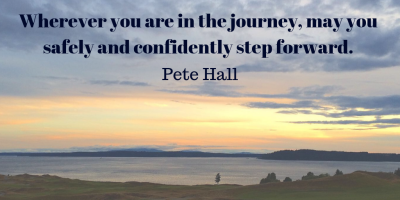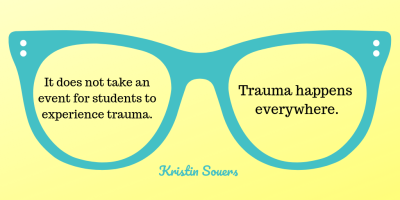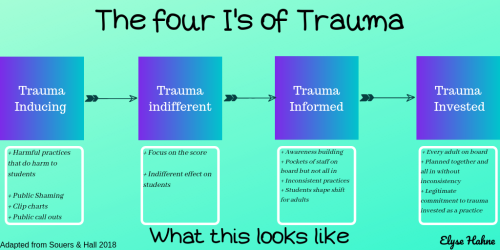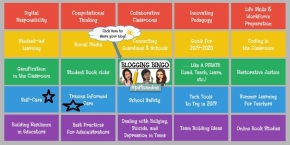
This will be a three (or more) part series to change the lense of current practices & movement toward trauma invested practices and bringing the human back into education. Join me along this journey.
I was first turned to Fostering Resilient Learners last summer as I had read the book Fostering Resilient Learners by Souers & Hall and wanted to support my students more. My school did this book as a campus book study during the 2018-2019 school year and I continued to follow both authors and jumped at the chance to attend the Fostering Resilient Learners institute in Tacoma, WA this week & enjoyed it. My hope is that my learning helps your journey to supporting all students along their educational journey.
Starting with the word trauma can be a loaded term. Trauma has been defined some as being part of or experiencing violence as well as a wide variety of events that have changed from generation to generation. The truth of the matter is that trauma does not discriminate nor does it matter if it is violence or long term versus short term.

Trauma is a word that affects so many of our students. Every single one of our students, I venture to say, have experienced some sort of trauma. It doesn’t have to be violence or abuse. It can be something that someone sees or experiences. Trauma is also defined as an exceptional experience in which powerful and dangerous events overwhelm a person’s capacity to cope (Souers & Hall, 2018). Trauma happens. How we move forward and support students with trauma truly matters.

So the question is what are we going to do to move to supporting students with trauma?
First, we must understand that some practices that have been in education are actually trauma inducing to students and we must move past these. Souers & Hall discussed the four I’s of trauma and what they look like in classrooms today. Interestingly enough, Trauma invested is what we should strive for when seeking practices in our schools. I’ll be honest and note that trauma informed is something I’ve heard and read often. Invested, however, is a new ballgame for me. However, it makes sense when you stop and realize the nature of each of the four I’s of trauma.

However, the shift from trauma informed practices to trauma invested practices is determined by the amount of staff willing to be consistent and determined to, not only, support students but to invest in this idea as a consistent practice. Trauma invested is something that takes effort, time, and every adult to be on board and transparent. Being transparent and reflecting upon my current knowledge, I believe my campus is at the trauma informed stage. We still have a ways to go and need to get everyone on board consistently. While the idea of supporting students through fostering resilient learners whole heartedly is there for some, it’s not all at the invested stage.
While I want to get there tomorrow, I understand that it takes time for every single adult to be on board. It’s something I hope we can strive for in the future. Take a minute to reflect on what your campus is doing and where you land on the four I’s of trauma.
Something that really resonates with me is the understanding that trauma invested practices are not something that’s a one size fits all model. It’s not a curriculum or workbook staff can complete to move on. It’s not on a checklist or grading document. It’s a practice that brings humans back into education. It’s the heart of schools to see students as individuals who have experiences along their educational journey and lives. It’s educators and staff understanding and investing in students every day as a whole. All in, consistent, and human practice all in.

Bottom line, our students all experience trauma. How we act, respond, and move forward matters. Trauma is a word, not a sentence (Souers & Hall, 2019) and it’s time to bring the human practices back into education for the success of our students.

 This blog post is apart of the #pd4uandme July blogging Bingo
This blog post is apart of the #pd4uandme July blogging Bingo
Image created by Pam Hubler
3 thoughts on “Trauma invested education, part 1”